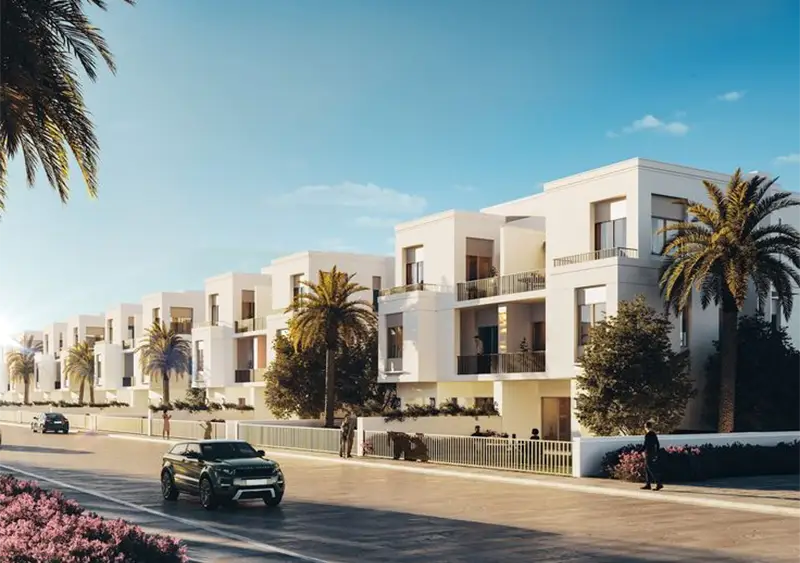Top 5 Benefits of 3D Rendering for Real Estate Developers
How 3D Rendering Is Changing the Game for Real Estate Developers

5 MIN READ
April 30, 2025

Written By
Harish Selvaraj
Introduction
Every real estate project starts with a pitch. A conversation. A sketch on paper that’s supposed to become something people live in, invest in, or sell.
But in reality, a blueprint isn’t always enough to win trust. You’re asking people to believe in something they can’t yet see. That’s a tough sell, unless your visuals do the heavy lifting for you.
This is where professional 3D rendering services flip the game. They allow developers to present unbuilt spaces with confidence, clarity, and emotional pull. And it’s not just for pretty pictures, it’s a business tool that helps you close faster, plan better, and market smarter.
Let’s look at five key ways 3D rendering is giving today’s developers a serious edge.
Top 5 Benefits of 3D Rendering for Real Estate Developers
In real estate, timing is everything. The sooner you can communicate your vision clearly and convincingly, the faster you move, from approvals to sales to revenue. That’s why developers are investing in 3D rendering for real estate service. It’s not just about showcasing design, it’s about accelerating momentum, reducing risk, and building confidence across every stakeholder group.
Here’s a deeper look at how it delivers real, measurable value.
-
Sell Before You Build: Turn Plans into Commitments
Off-plan sales have always been a challenge. You’re asking buyers to commit to a future they can’t yet see. But with photorealistic 3D rendering, that future becomes tangible. Buyers can experience not just what the layout looks like, but what it feels like to live there how light enters the room, how materials interact, where furniture could go.
One developer we worked with launched a pre-sales campaign using only 3D assets no model apartment, no construction progress photos. They sold 65 percent of units before the first floor was poured. It wasn’t luck. It was clarity.
3D renderings give you that head start, helping you sell the idea before the building is even born. Learn more about the top 7 benefits of 3D rendering services for architecture.
-
Avoid Expensive Surprises During Construction
Once a project is on-site, every change comes at a cost time, money, or both. What looked right on paper doesn’t always translate in the field. That’s where 3D visualization proves invaluable.
By rendering your design in advance, you can catch issues that wouldn’t be obvious in a CAD file. Is the hallway too narrow? Does the balcony block the best light? Are the kitchen finishes clashing with flooring?
Stakeholders don’t just imagine they see. That shared reference keeps architects, engineers, and contractors aligned. It’s easier to refine in pixels than it is in concrete and steel.
-
Speed Up Government and Planning Approvals
Most planning boards are not filled with architects. They’re filled with decision-makers who need to grasp intent quickly and clearly. Submitting highly detailed 3D visuals especially contextual renders that show the building in its environment helps eliminate confusion and speeds up feedback.
When a visual can answer ten questions at once, you cut down on back-and-forth revisions and long waits for clarification. Some municipalities now expect renderings as part of large-scale submissions. For forward-thinking developers, it’s not an extra it’s a built-in advantage.
-
Create Better Buyer Experiences and Stronger Engagement
Real estate marketing is no longer just about location or square footage it’s about storytelling. Buyers expect to interact with a space before they ever step on-site. With high-quality 3D renderings, you can offer them that story from day one.
Imagine giving a buyer a fully furnished virtual walkthrough, complete with lighting transitions, curated materials, and styling that matches your target demographic. It’s immersive. It’s memorable. It shifts the conversation from “what is this space?” to “when can I move in?”
A better experience builds trust. And trust closes faster. Check out how 3D rendering enhances e-commerce product displays.
-
Cut Marketing Spend Without Compromising Impact
Physical show units are expensive. So is printed collateral. And while there’s still value in those tools, 3D rendering helps you do more with less.
Once your renders are ready, they can be used across every touchpoint:
- Digital ads
- Social media carousels
- Pitch decks
- Landing pages
- Investor updates
- Sales center screens
You’re not just building assets you’re building a reusable library that scales with your marketing. And when changes happen like updated finishes or new pricing tiers you don’t need to reshoot or restage. You update the render, not the real-world setup.
How ZealousXR Helps Developers Leverage 3D Rendering for Maximum Impact in the Real Estate Industry?
From Pre-Launch Visuals to Project Marketing
At ZealousXR, we understand that every development begins long before ground is broken. You need visuals that not only reflect the quality of your project, but also move people—investors, buyers, city planners to take action.
That’s why we collaborate with real estate developers to bring clarity and momentum to each phase of the journey. Whether it’s a high-rise residential tower, a retail center, or a mixed-use master plan, our 3D rendering services are built for real-world impact.
We specialize in:
-
Interior and exterior photorealistic renders that bring architectural concepts to life with precision and realism
-
Virtual tours and animations that offer immersive exploration from anywhere in the world
-
Aerial renders and flythroughs to showcase the scale, context, and environment of large developments
Every asset we create is designed to perform across platforms—brochures, websites, investor decks, zoning submissions, and digital campaigns.
More than just a rendering studio, we act as an extension of your in-house team. Fast turnarounds. Clear communication. Results that speak for themselves.
Conclusion
In real estate, what you can show is just as important as what you can build.
3D rendering for real estate developers gives you the power to sell ideas, avoid missteps, and move faster—from the first pitch to the final unit sold. It’s not just about aesthetics. It’s about better communication, fewer surprises, and the kind of visual storytelling that drives decisions.
As competition grows and timelines shrink, those who can present their vision clearly—before it's built—are the ones who stay ahead.
If you're ready to trade guesswork for clarity and slow approvals for faster sales, ZealousXR is here to help.
About the writer :
Harish Selvaraj heads Zealous Services' 3D animation and modeling projects, bringing over 17 years of experience in ... delivering top-tier 3D solutions. He collaborates directly with clients to ensure their ideas are transformed into powerful 3D results that meet both creative and business goals. Harish is deeply involved in driving sales and managing teams, making sure that each project delivers on quality while helping businesses grow through impactful 3D designs.
Read MoreFrequently Asked Questions (FAQ)
How early in a project should developers start using 3D rendering?
Ideally, 3D rendering should begin as soon as your floorplans and design concepts are ready. Early visuals can help secure permits, attract investors, and kickstart pre-sales before construction begins. The sooner you bring your vision to life visually, the more value you get throughout the project lifecycle.
What types of 3D visuals do developers typically need?
Most developers benefit from a combination of exterior renders, interior staging visuals, aerial views, and virtual tours. The right mix depends on your target audience and marketing strategy. For example, residential projects often use lifestyle interiors, while commercial spaces may require zoning context and aerial flyovers.
Can 3D rendering replace model apartments or show flats?
In many cases, yes. High-quality renders and virtual tours can serve as digital showrooms, helping buyers visualize the space without a physical model. While show units still have their place, renders offer greater flexibility, faster setup, and significant cost savings—especially for large developments.
How does 3D rendering help avoid construction mistakes?
By visualizing the layout, materials, and spatial relationships in detail, 3D rendering helps teams catch design flaws before construction begins. It aligns architects, engineers, and contractors early, reducing change orders, miscommunication, and budget overruns down the line.
Why should developers partner with a studio like ZealousXR instead of a freelancer?
While freelancers may be cost-effective for small tasks, studios like ZealousXR offer scalability, structured workflows, and industry expertise. We ensure consistent quality, meet tight deadlines, and support multi-phase developments with collaborative tools and a full-service rendering team